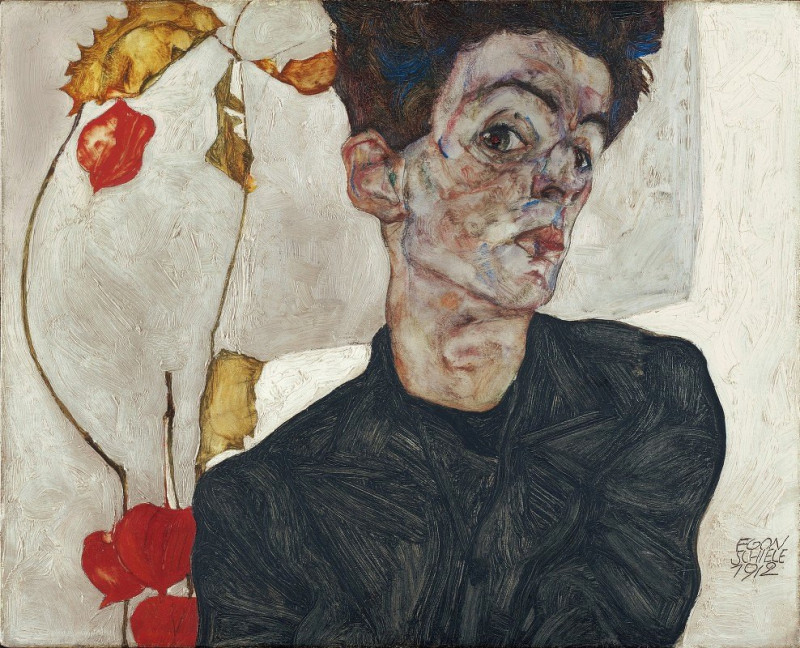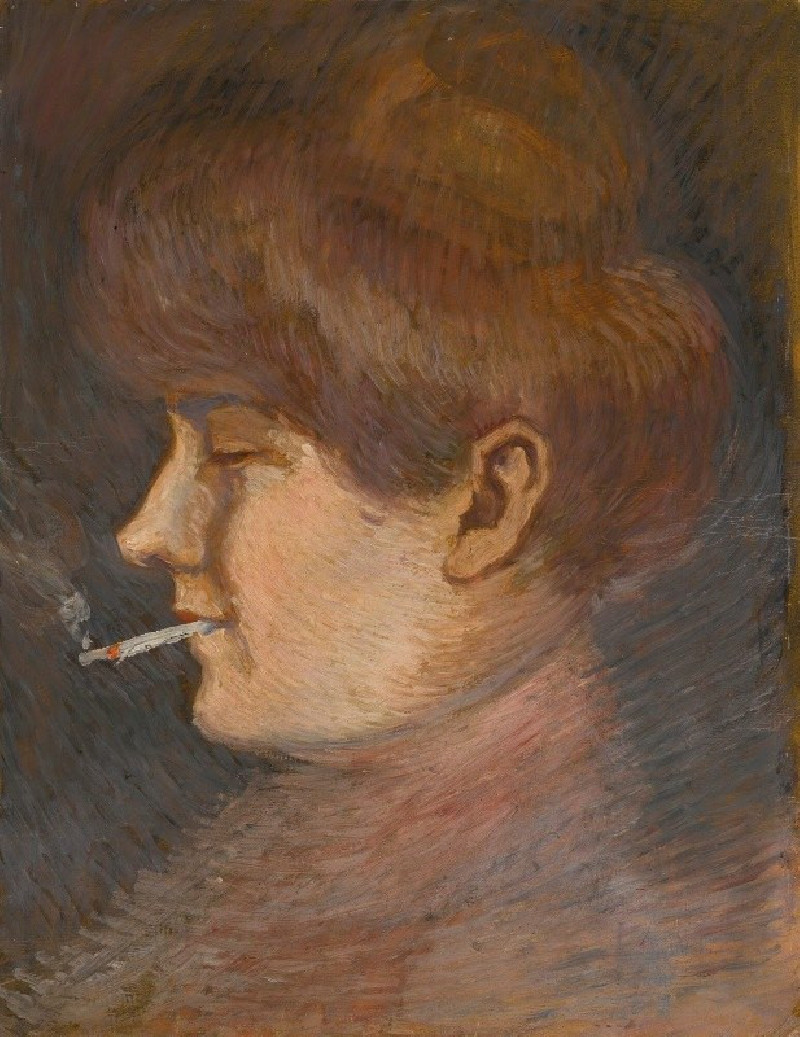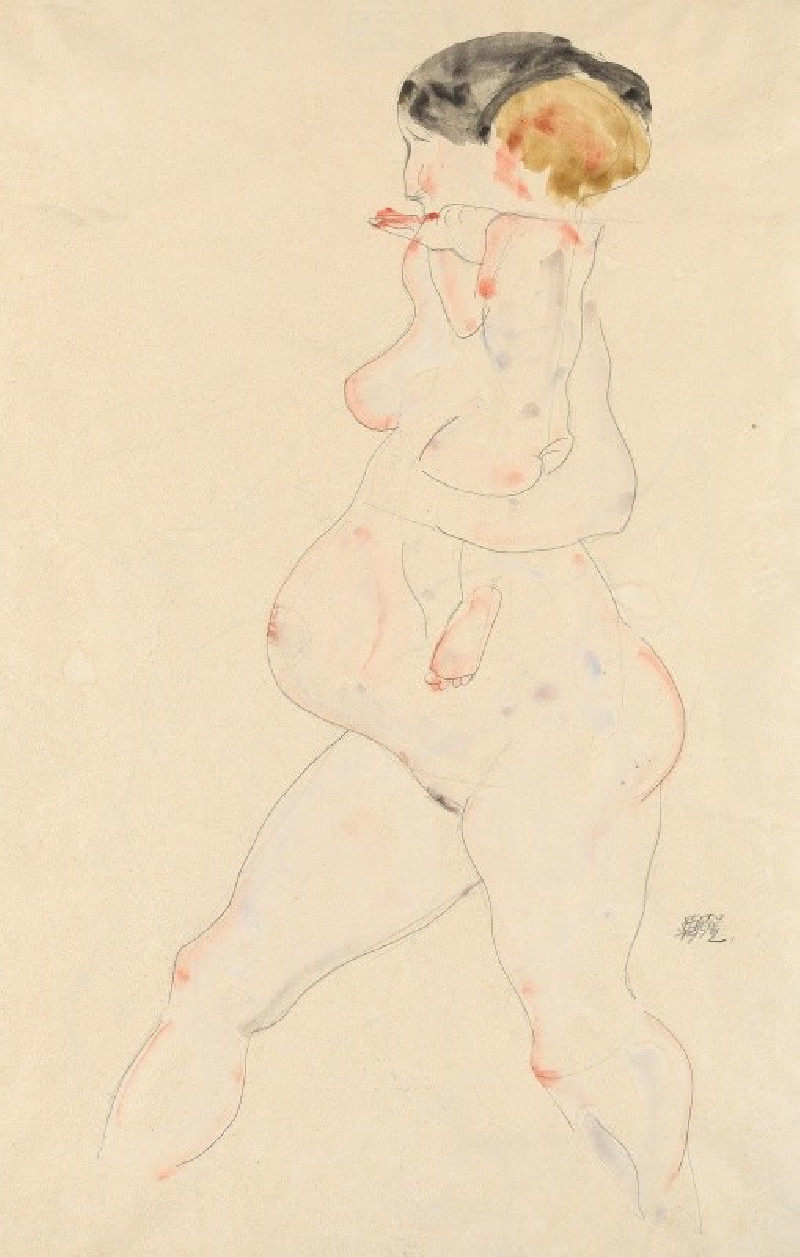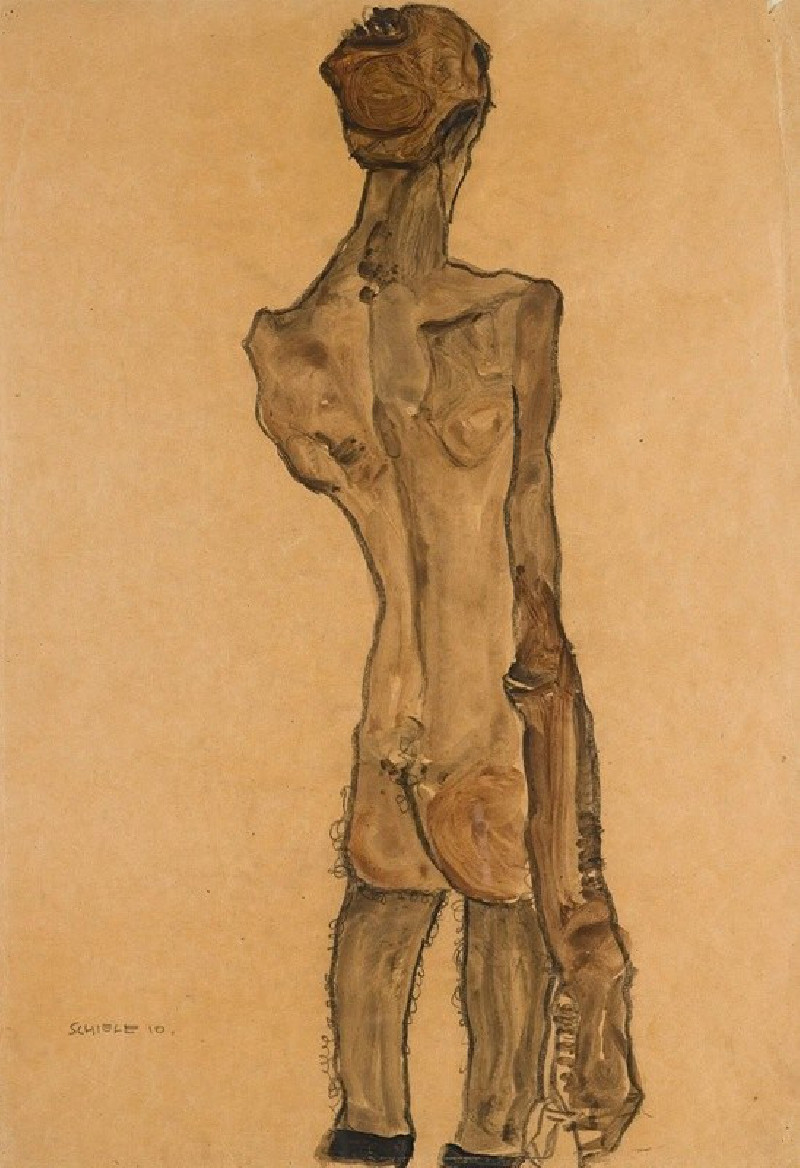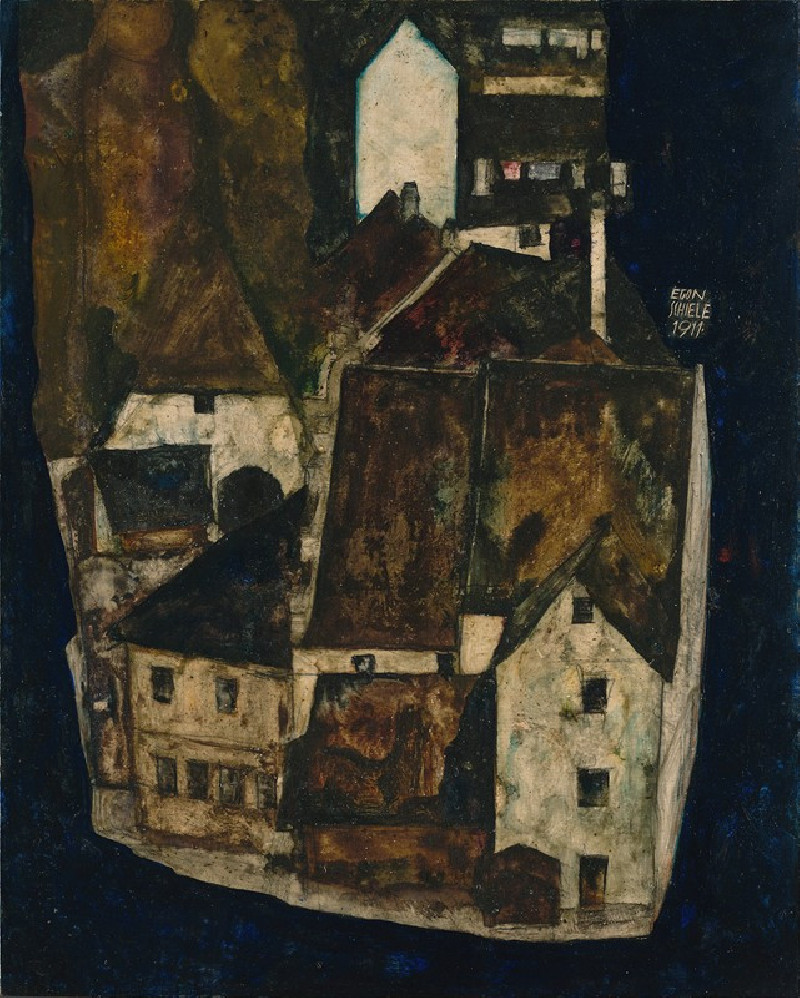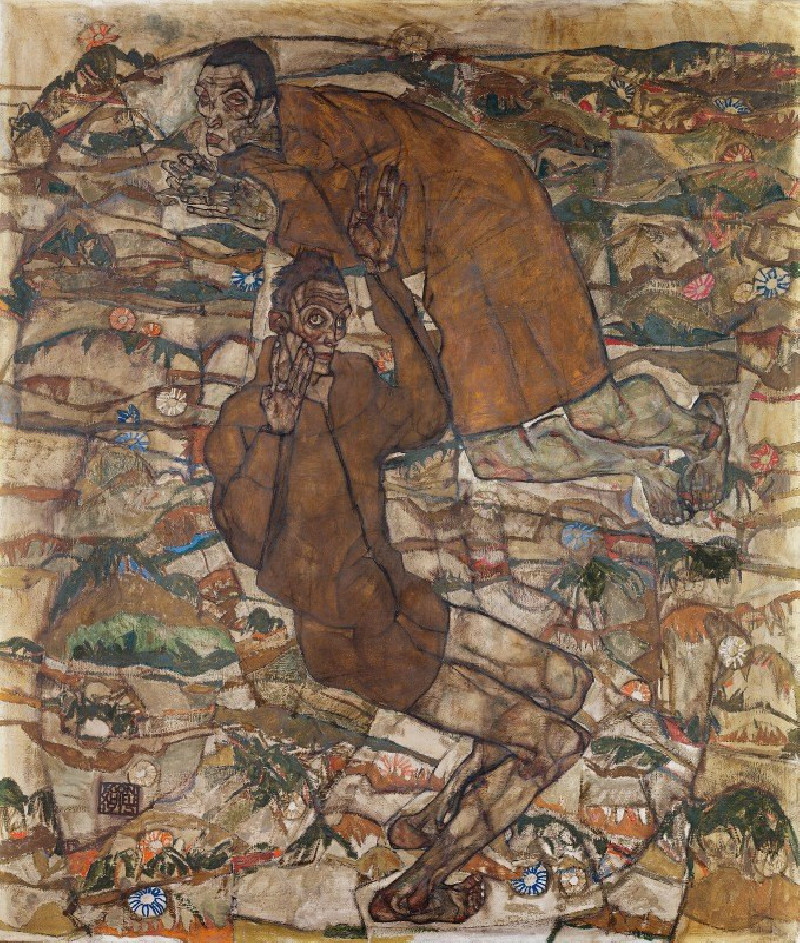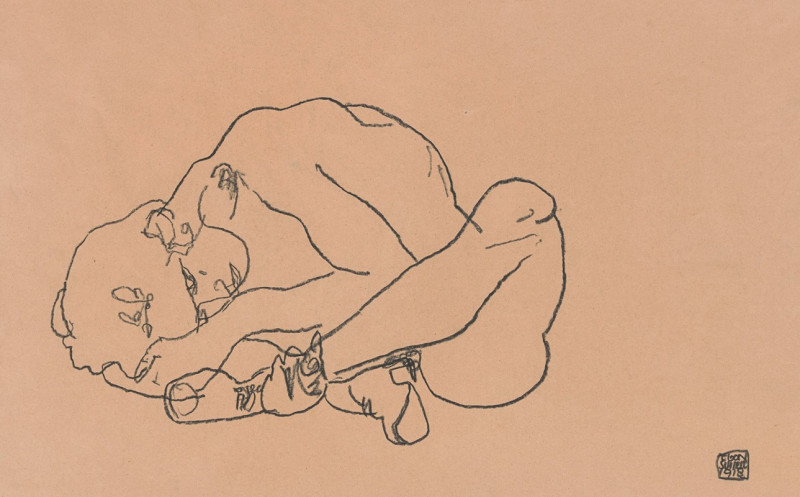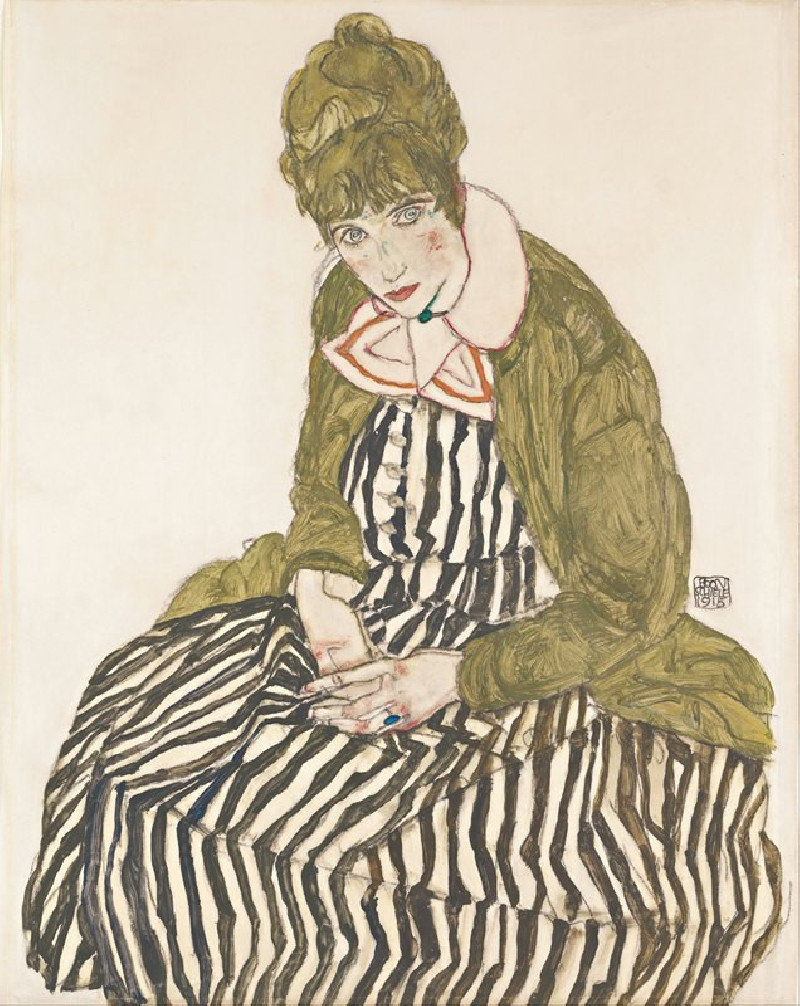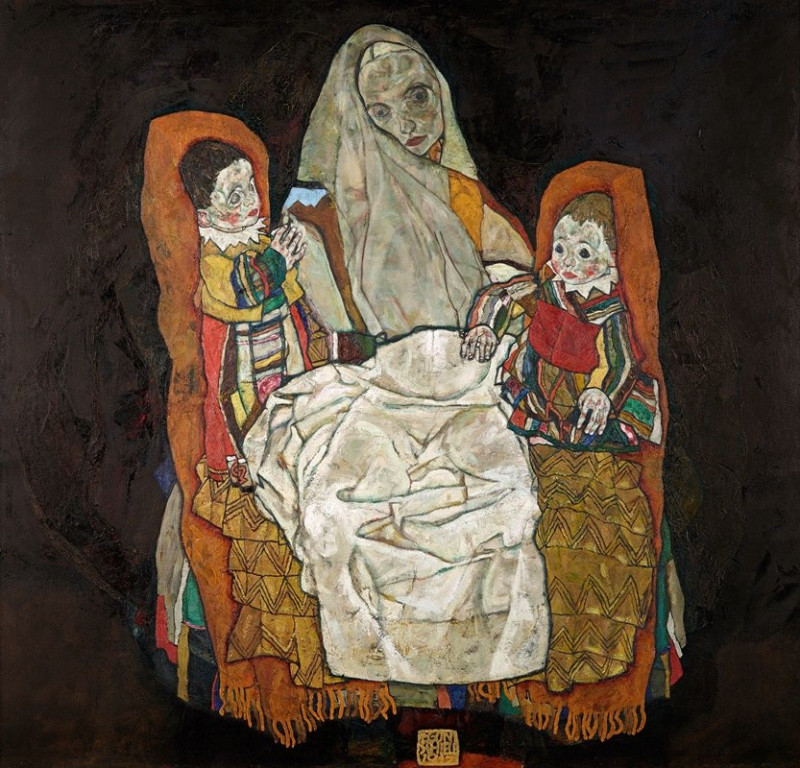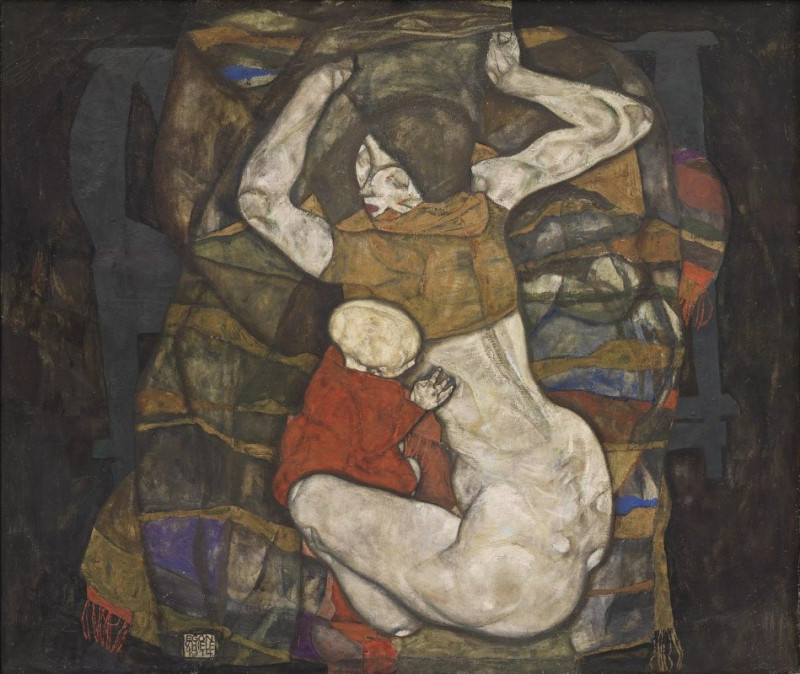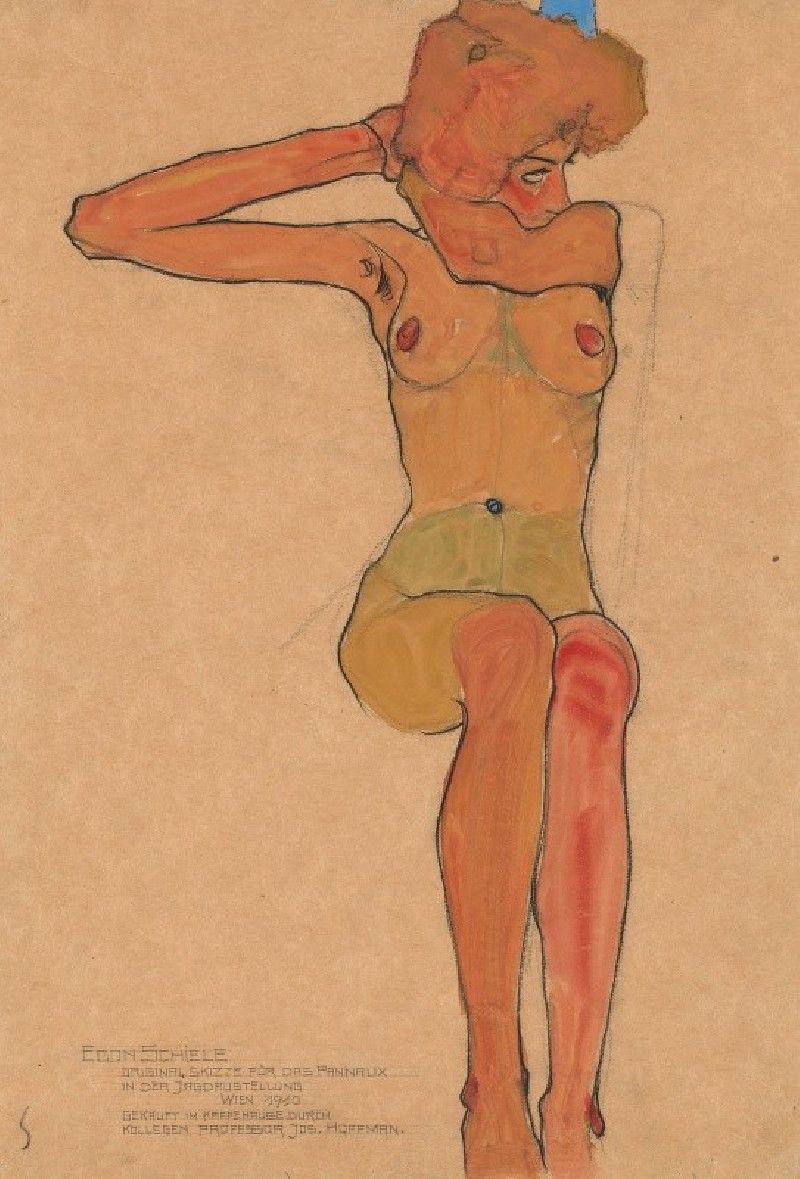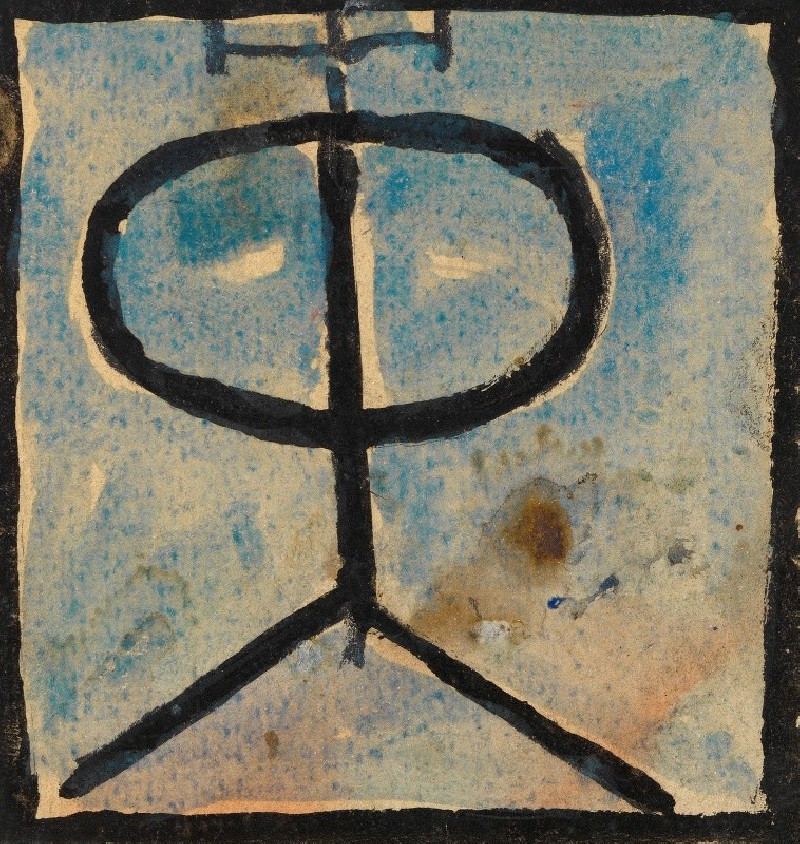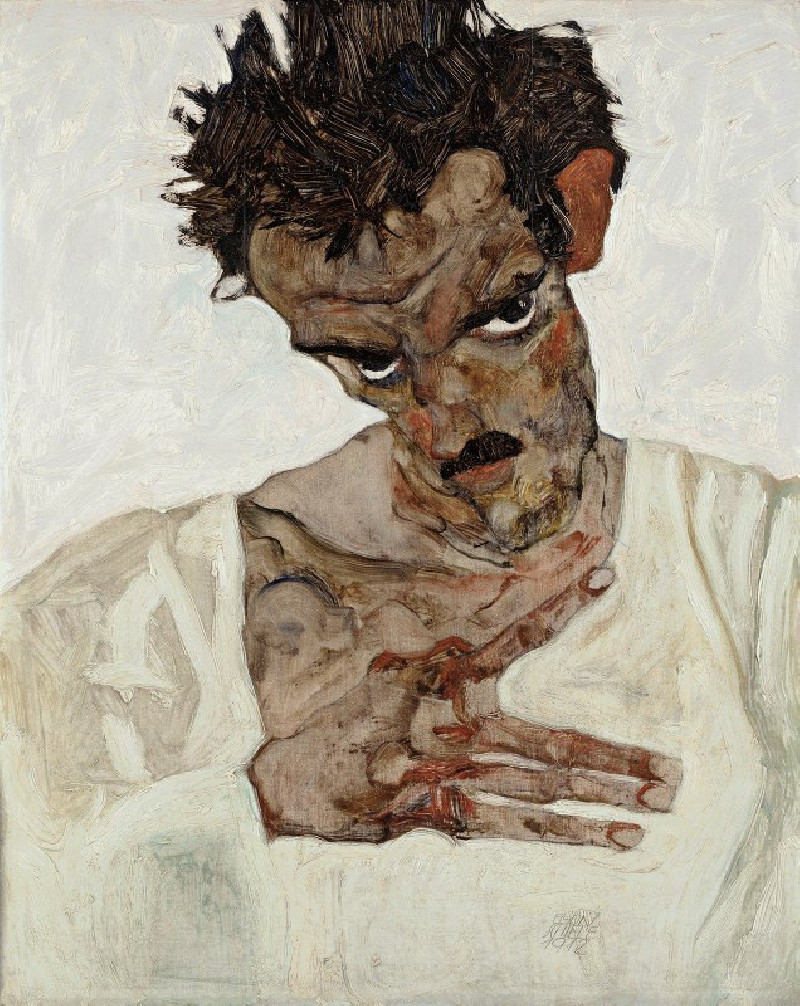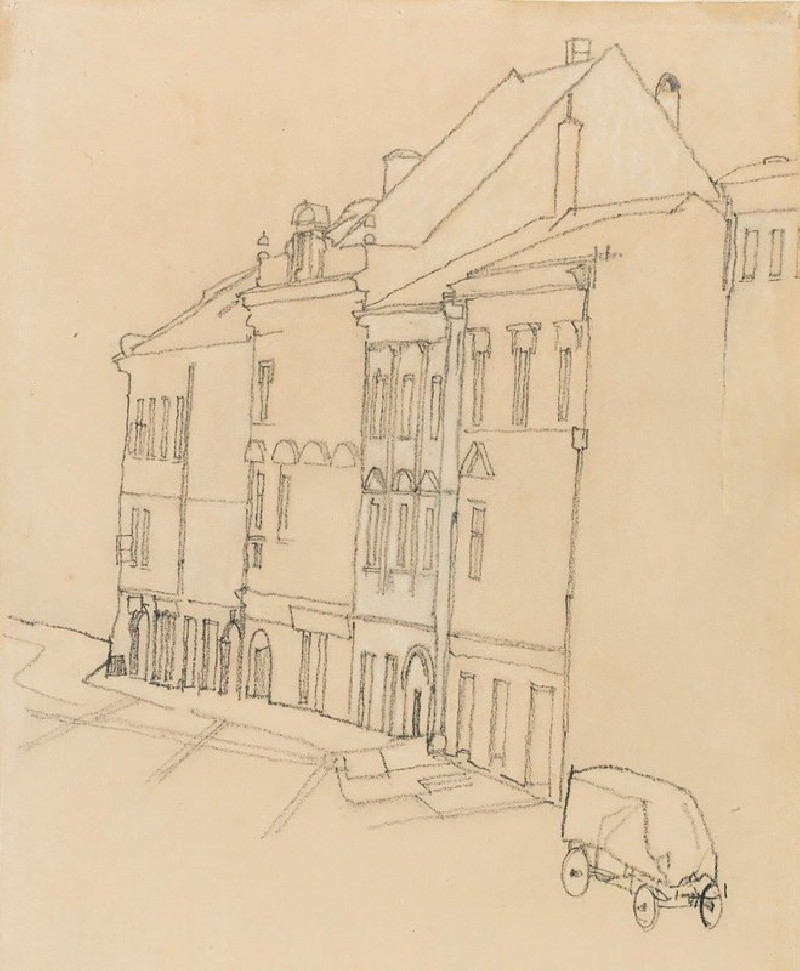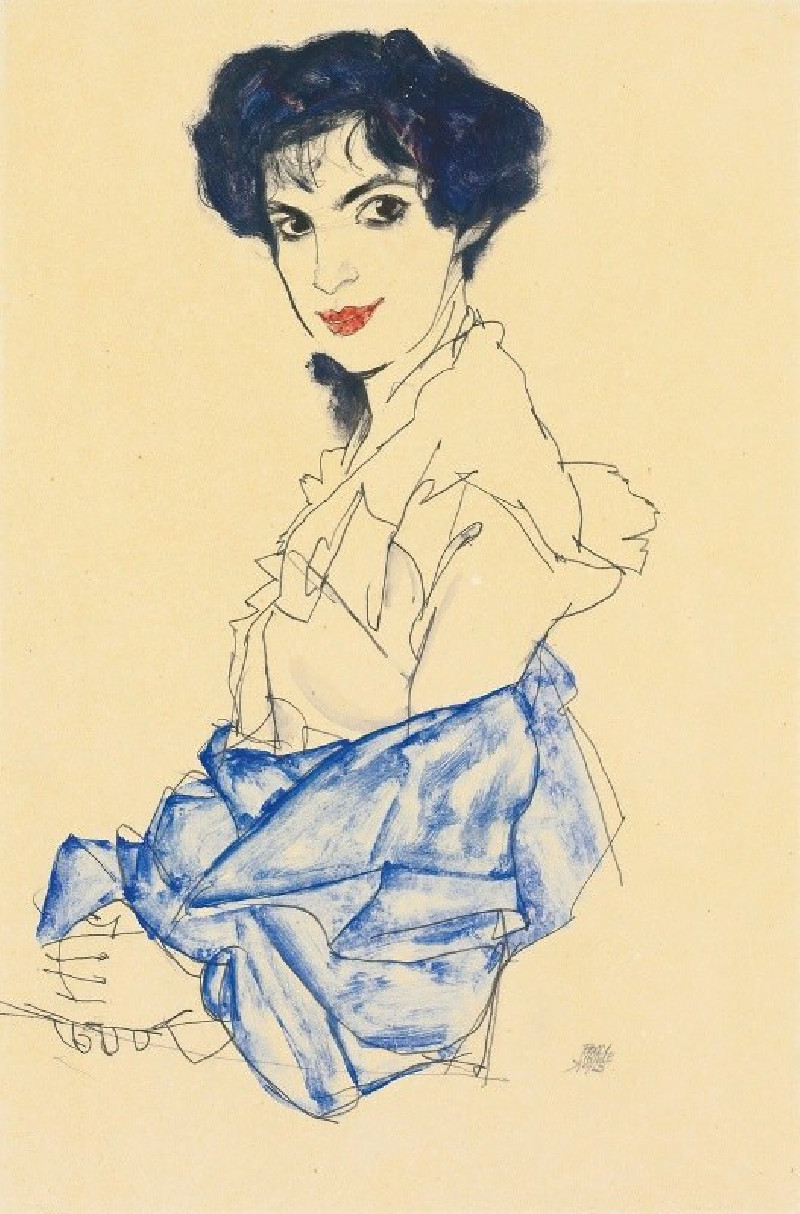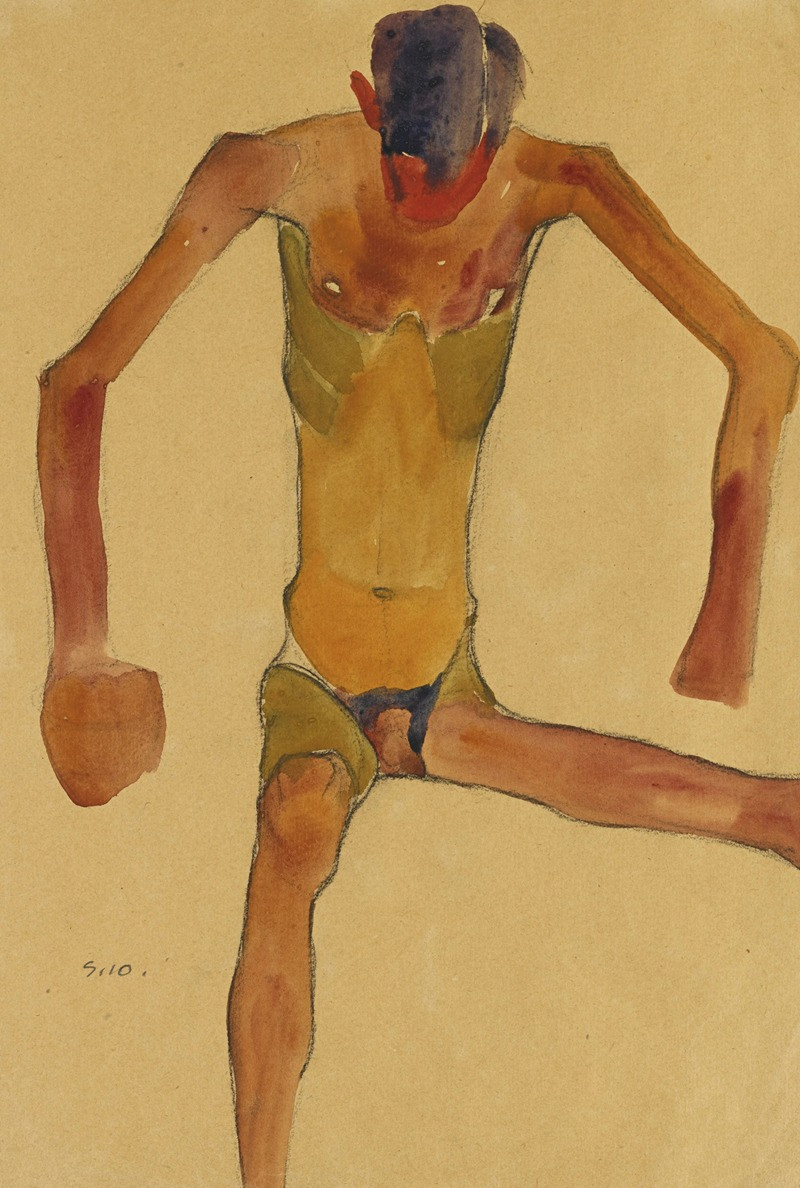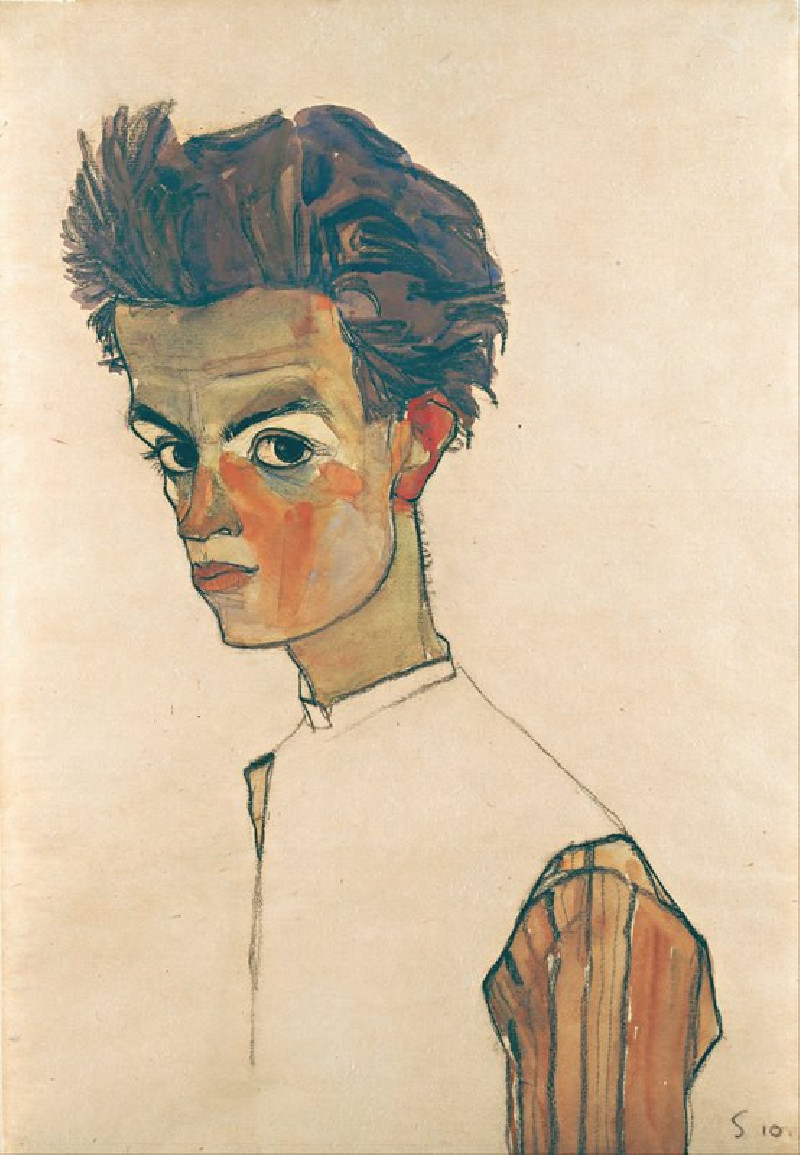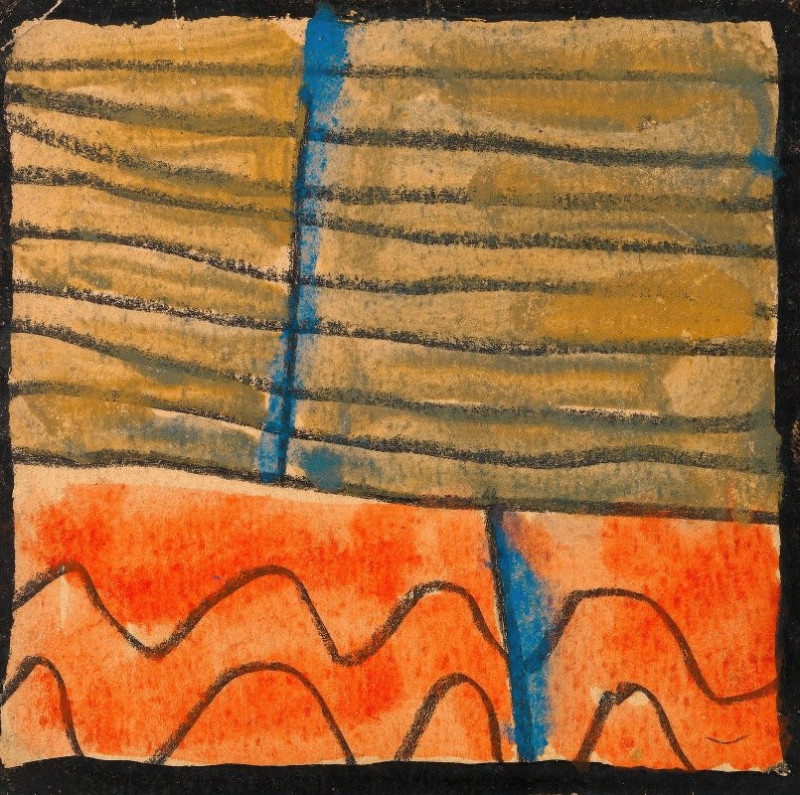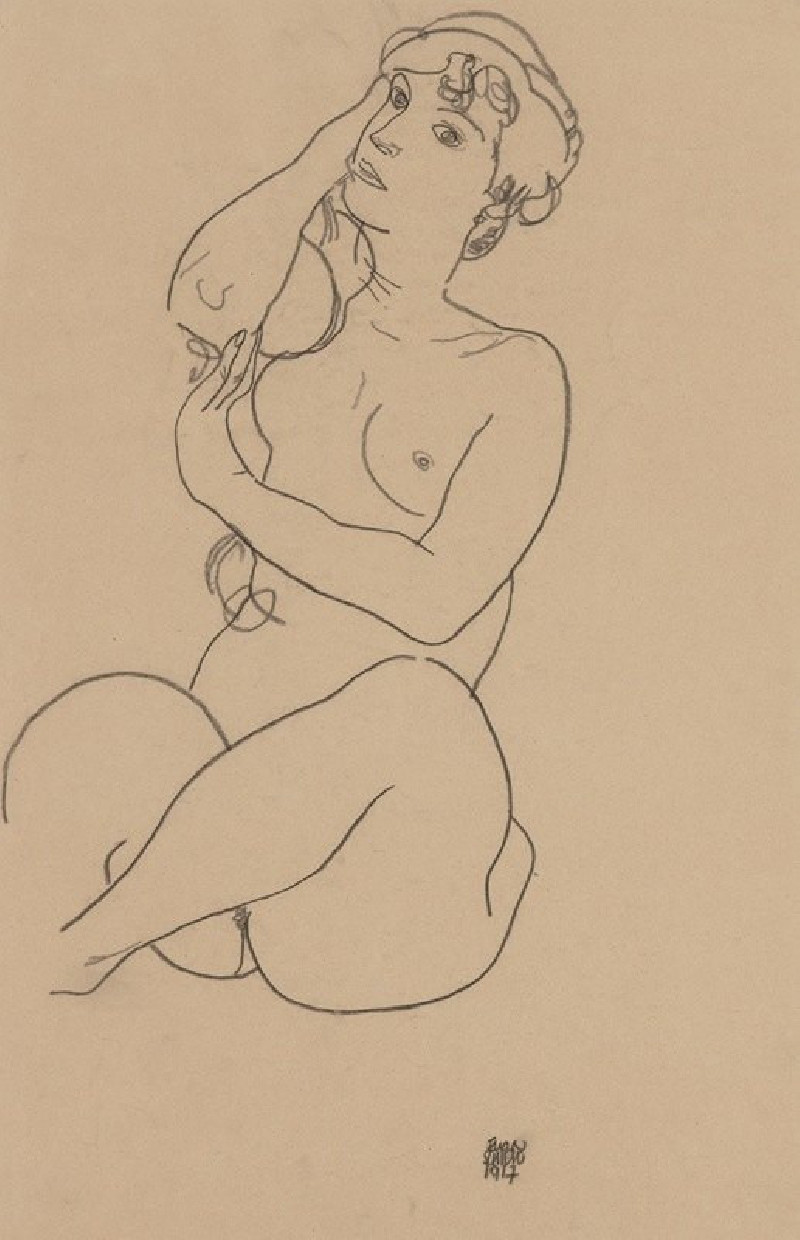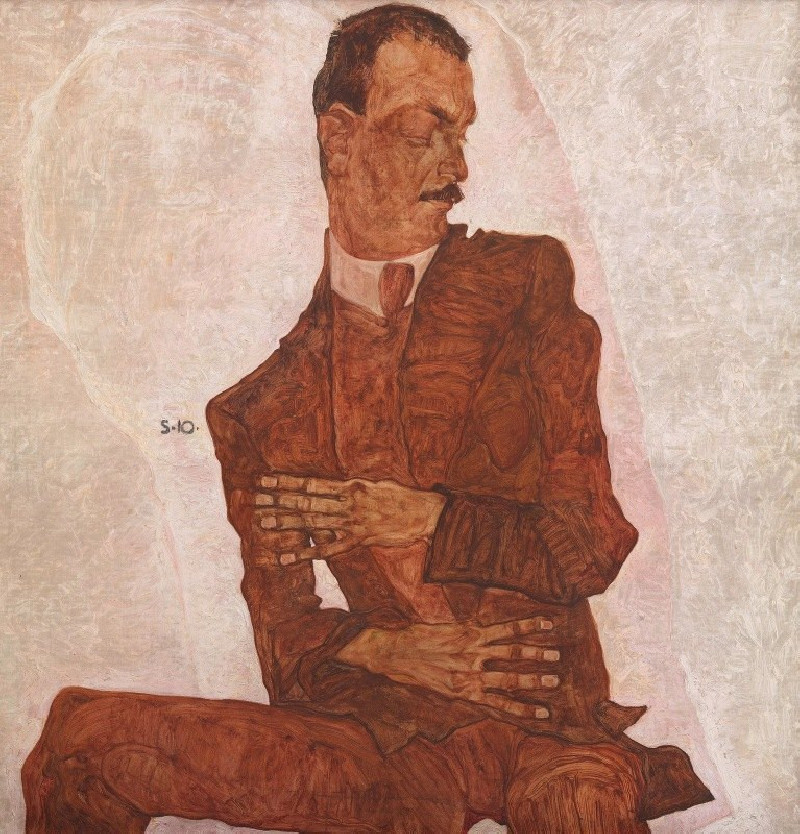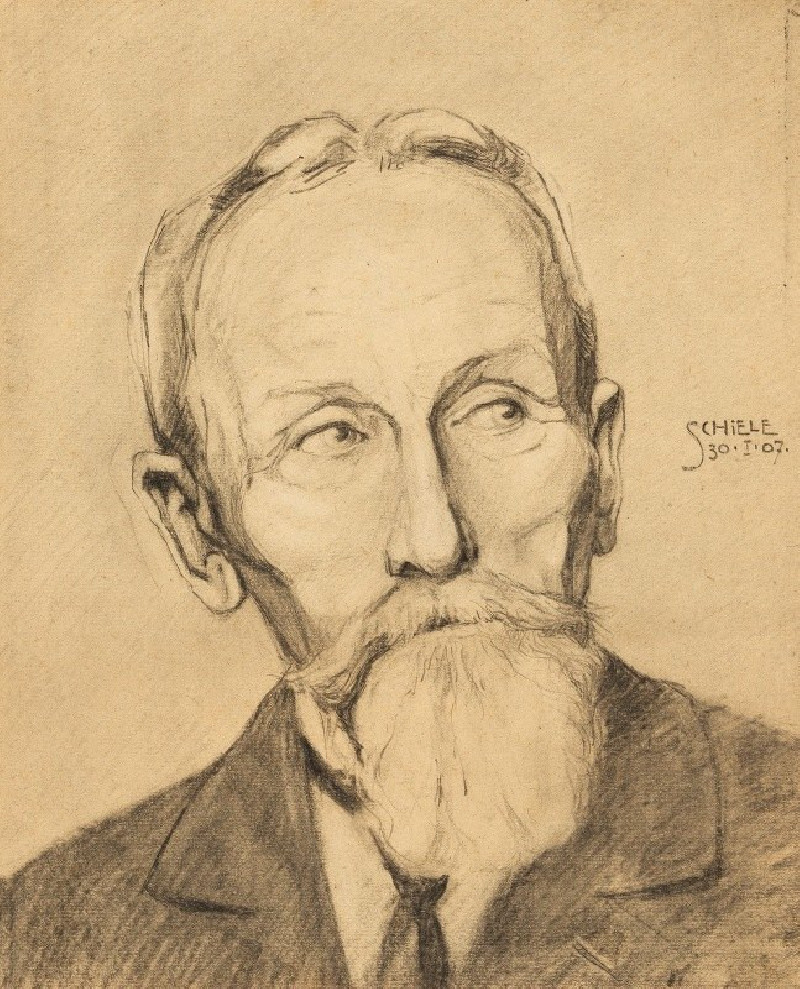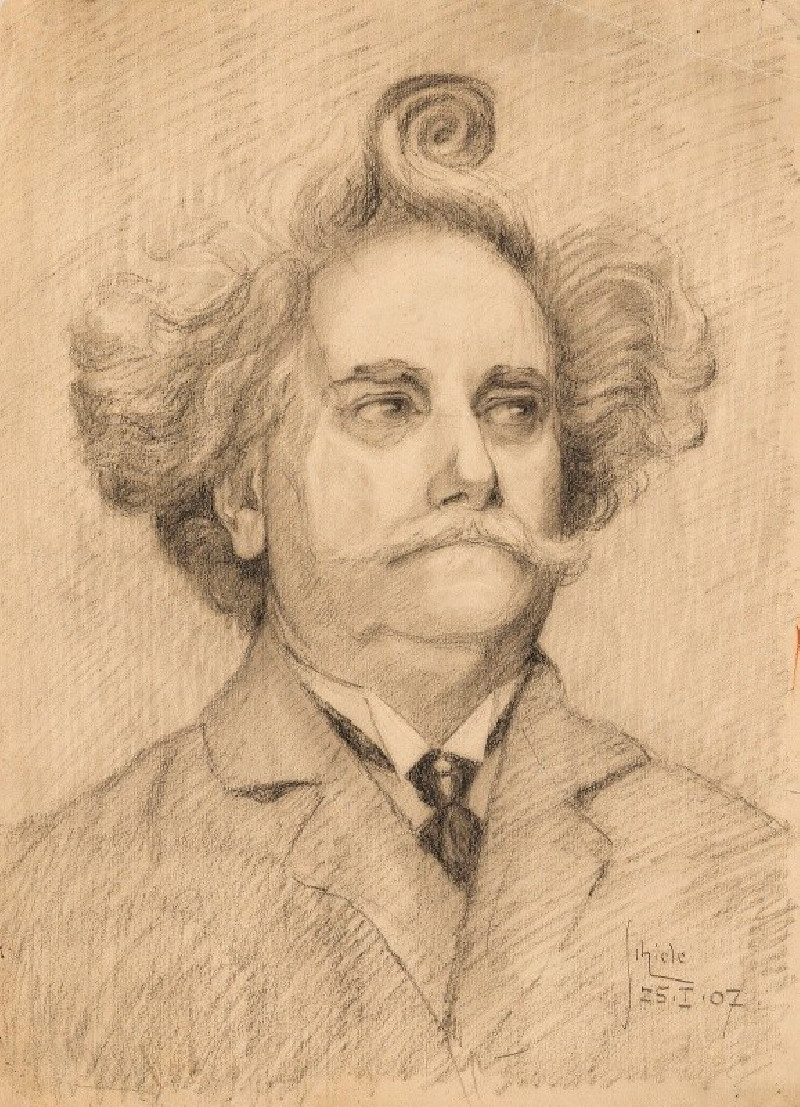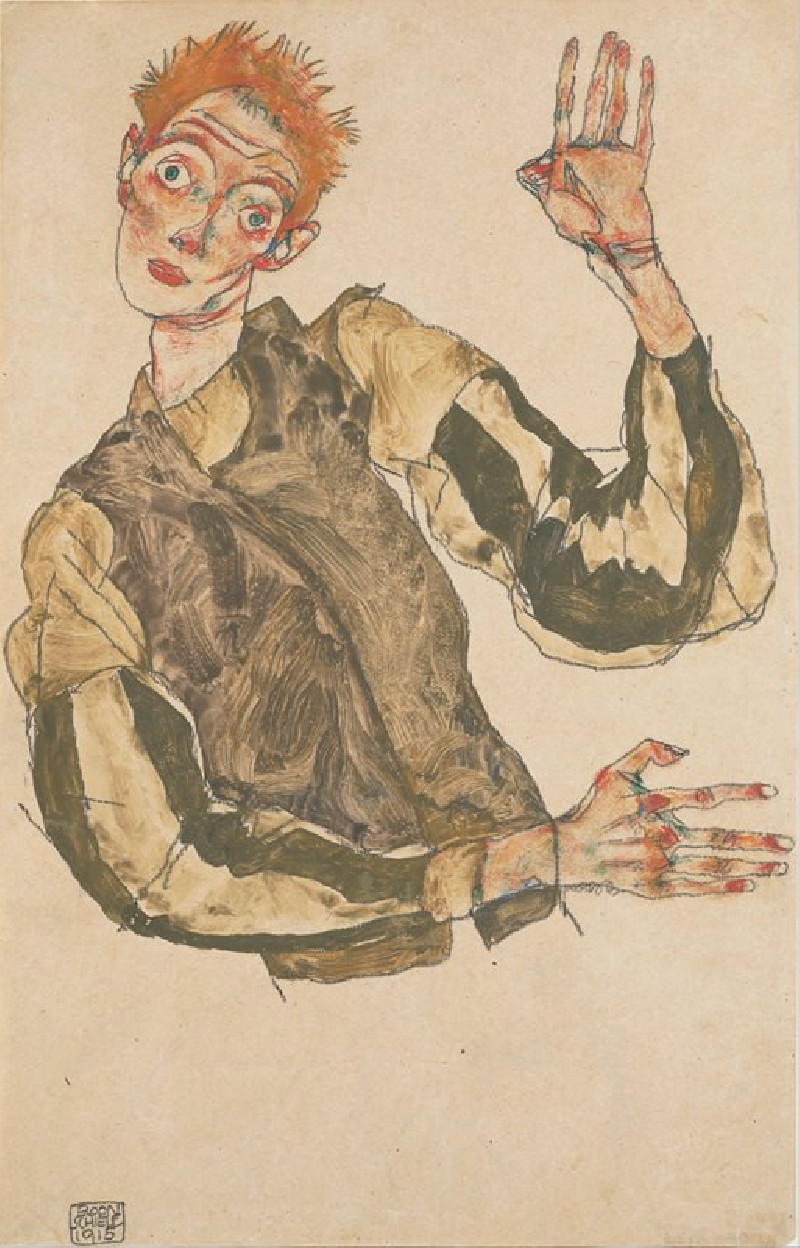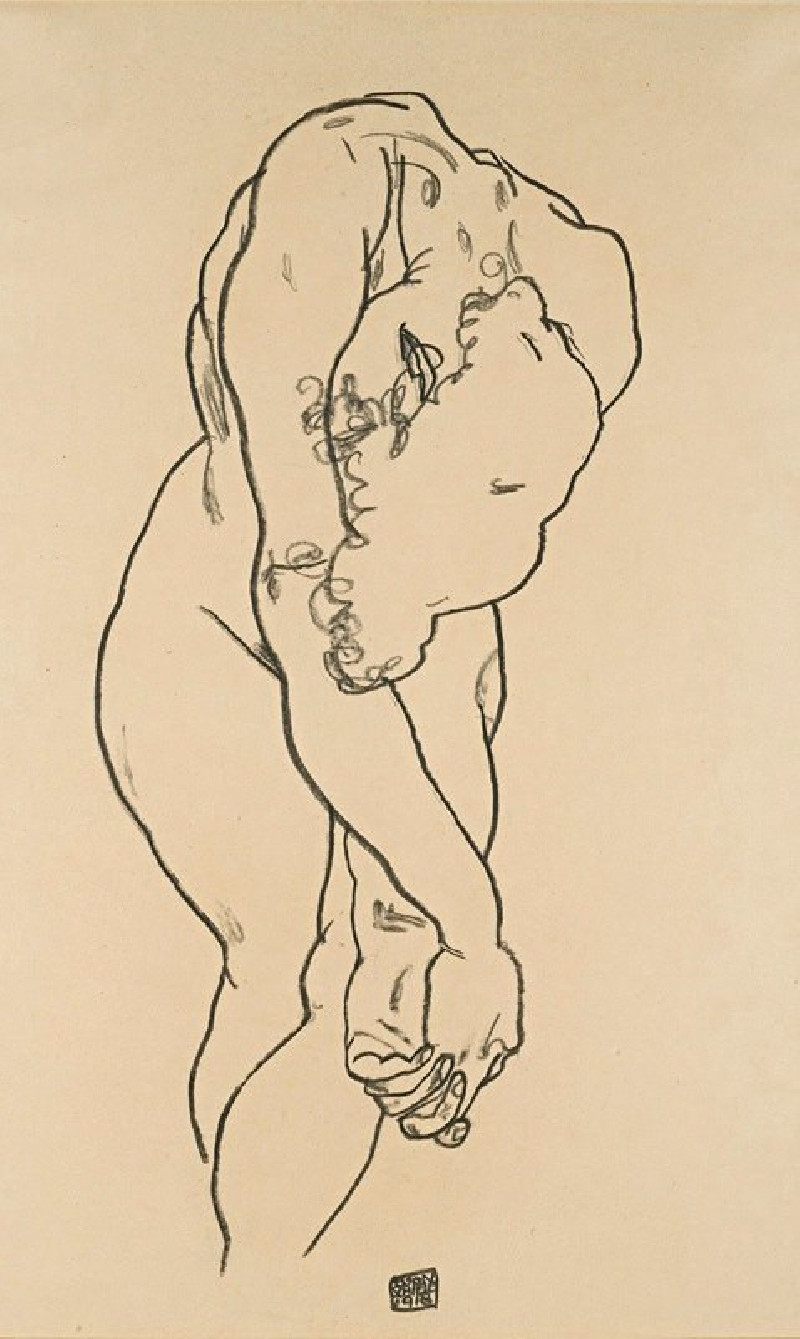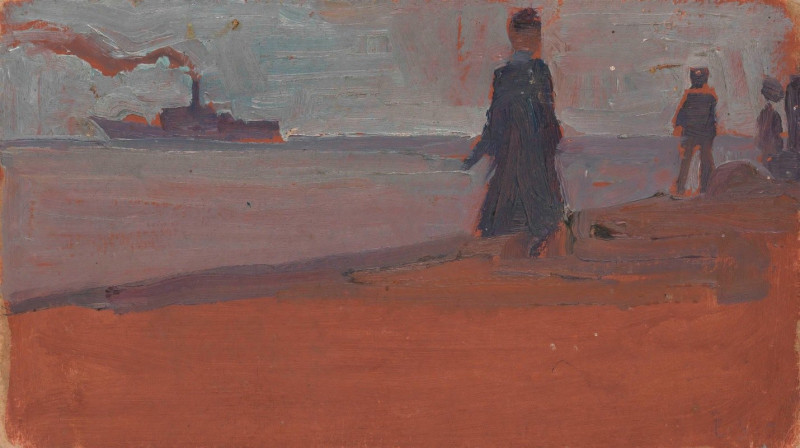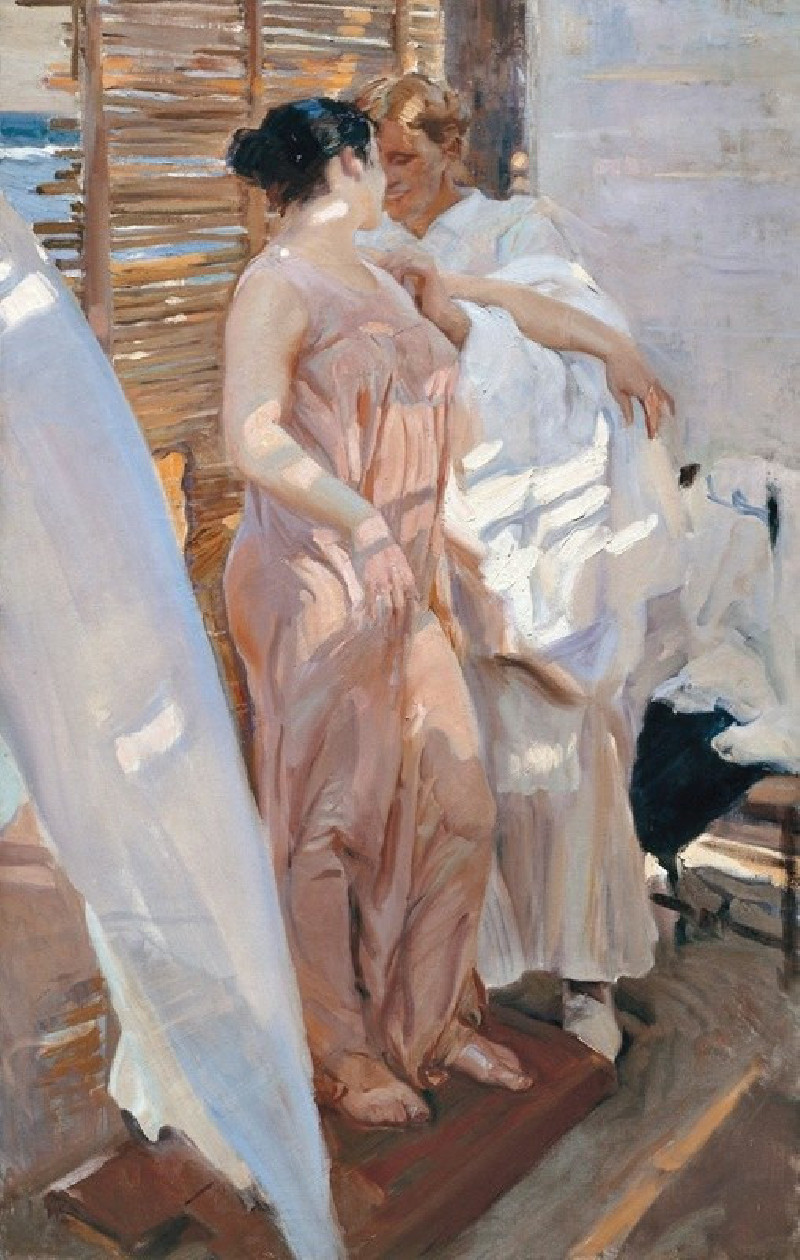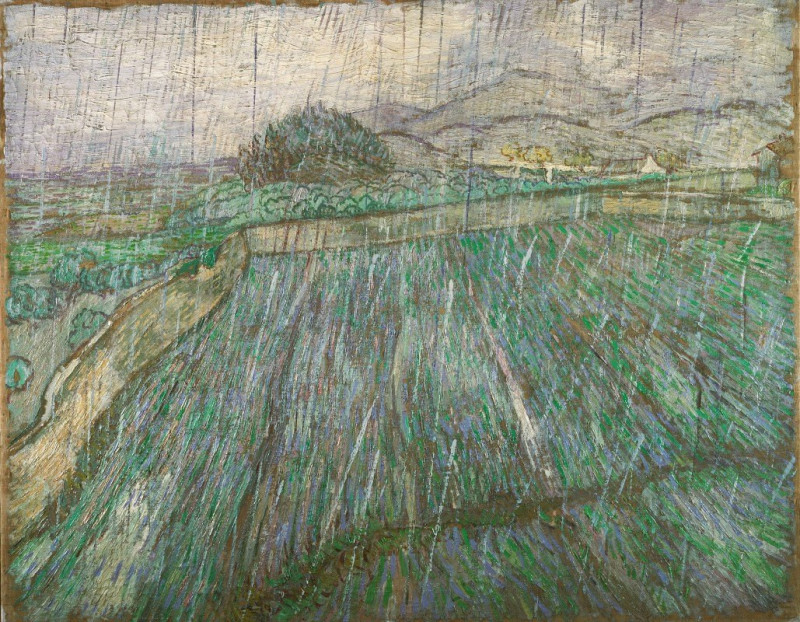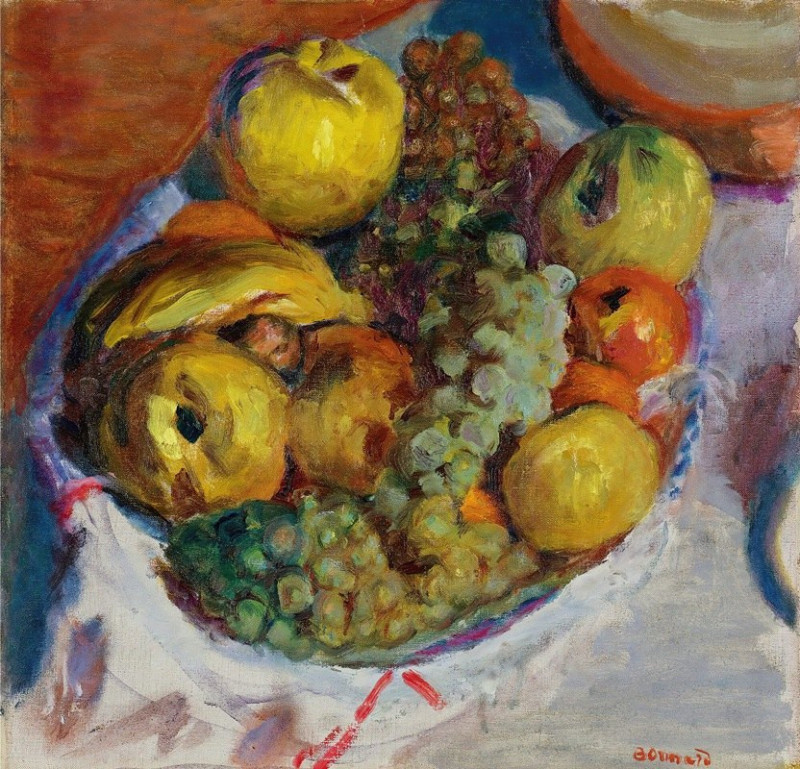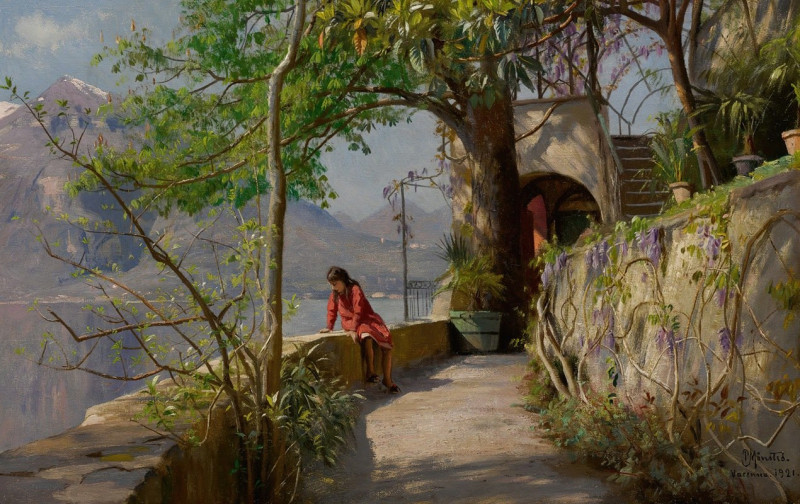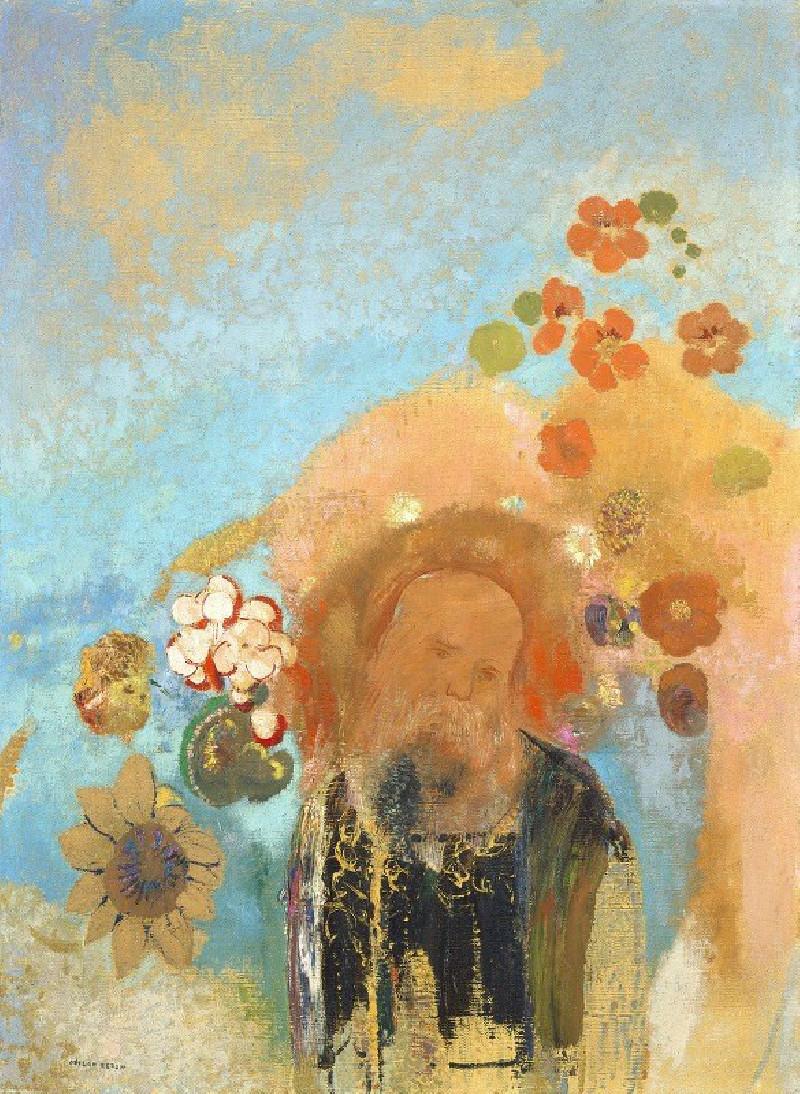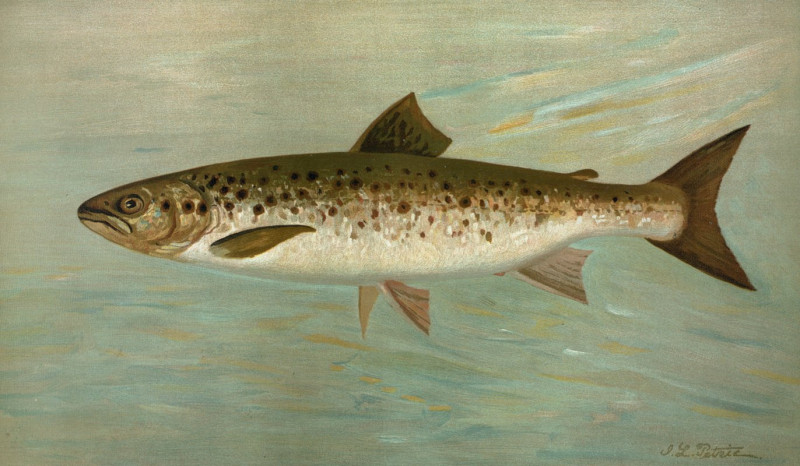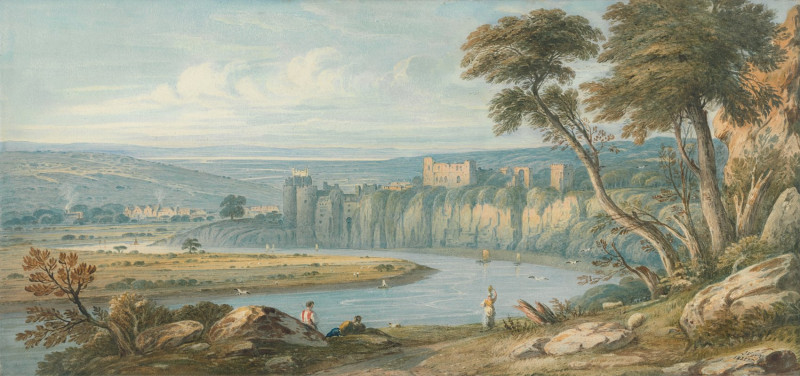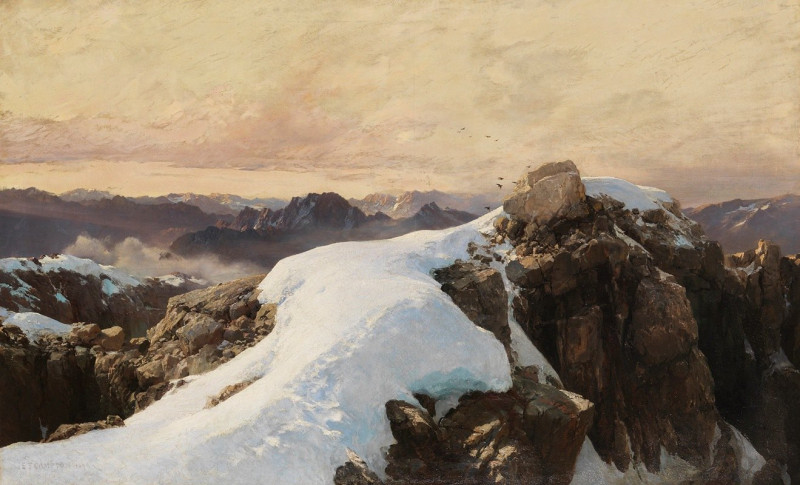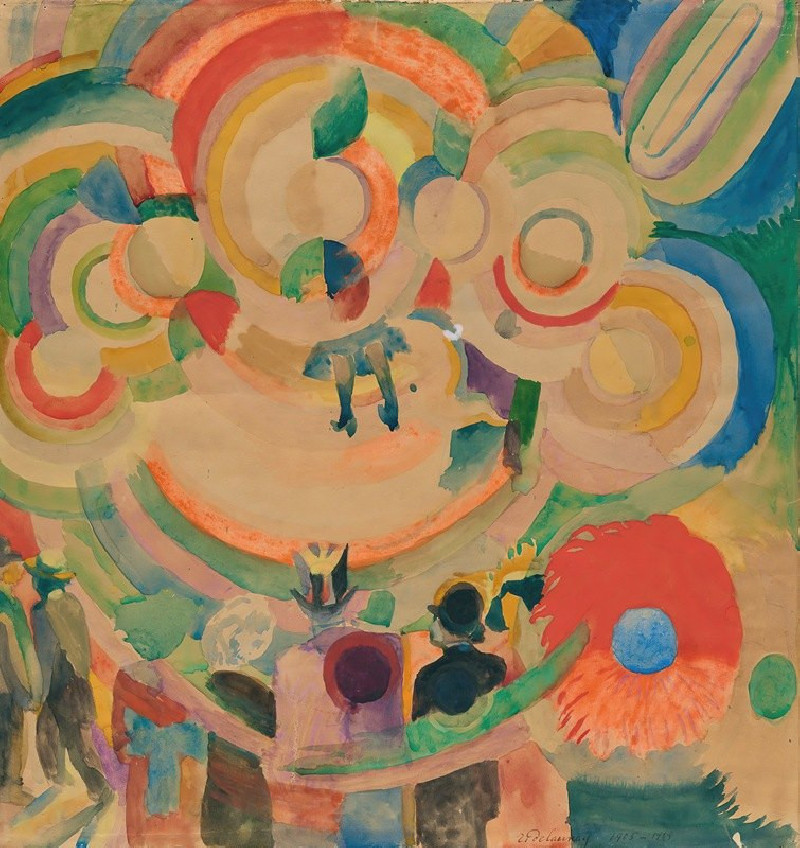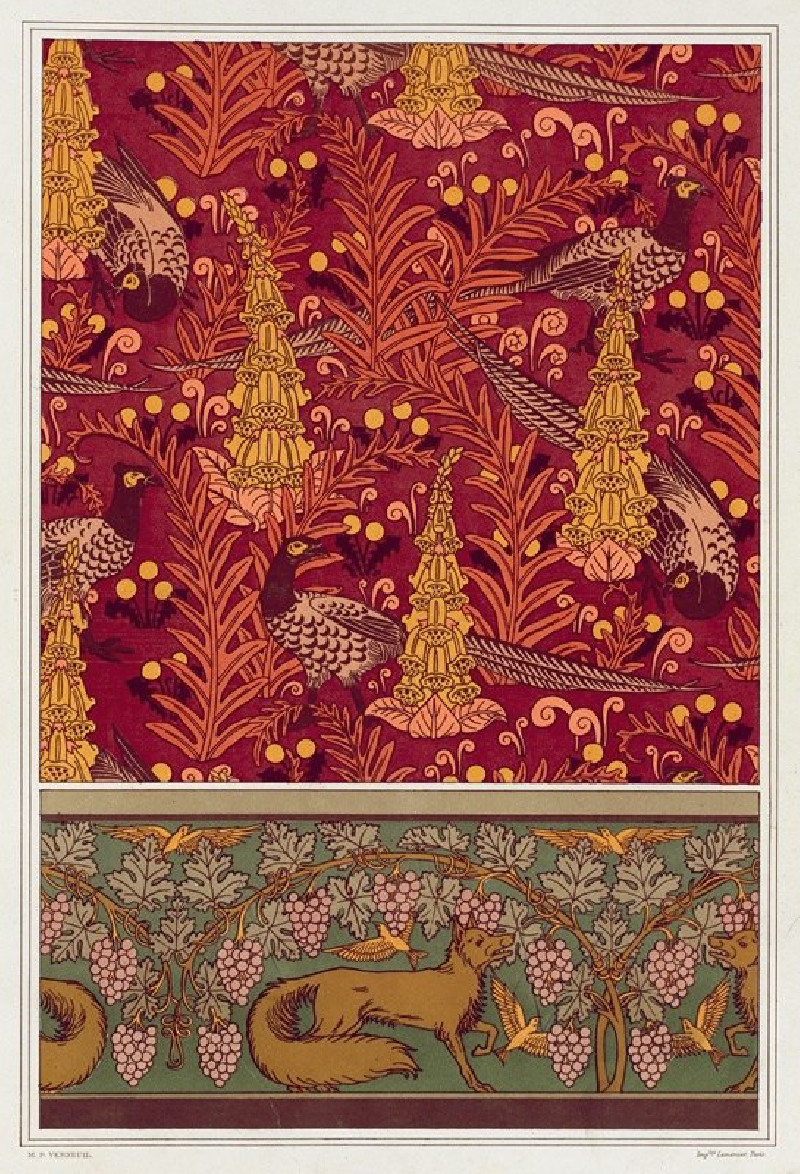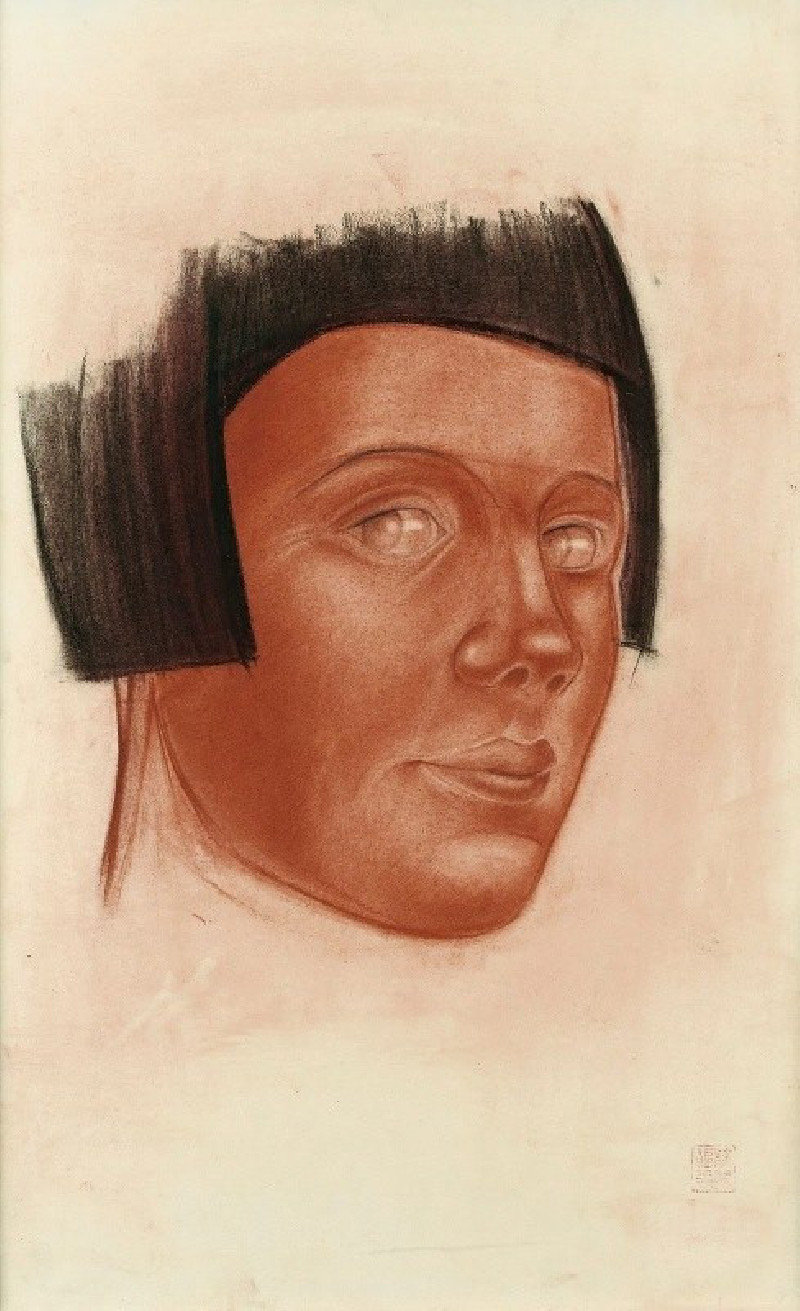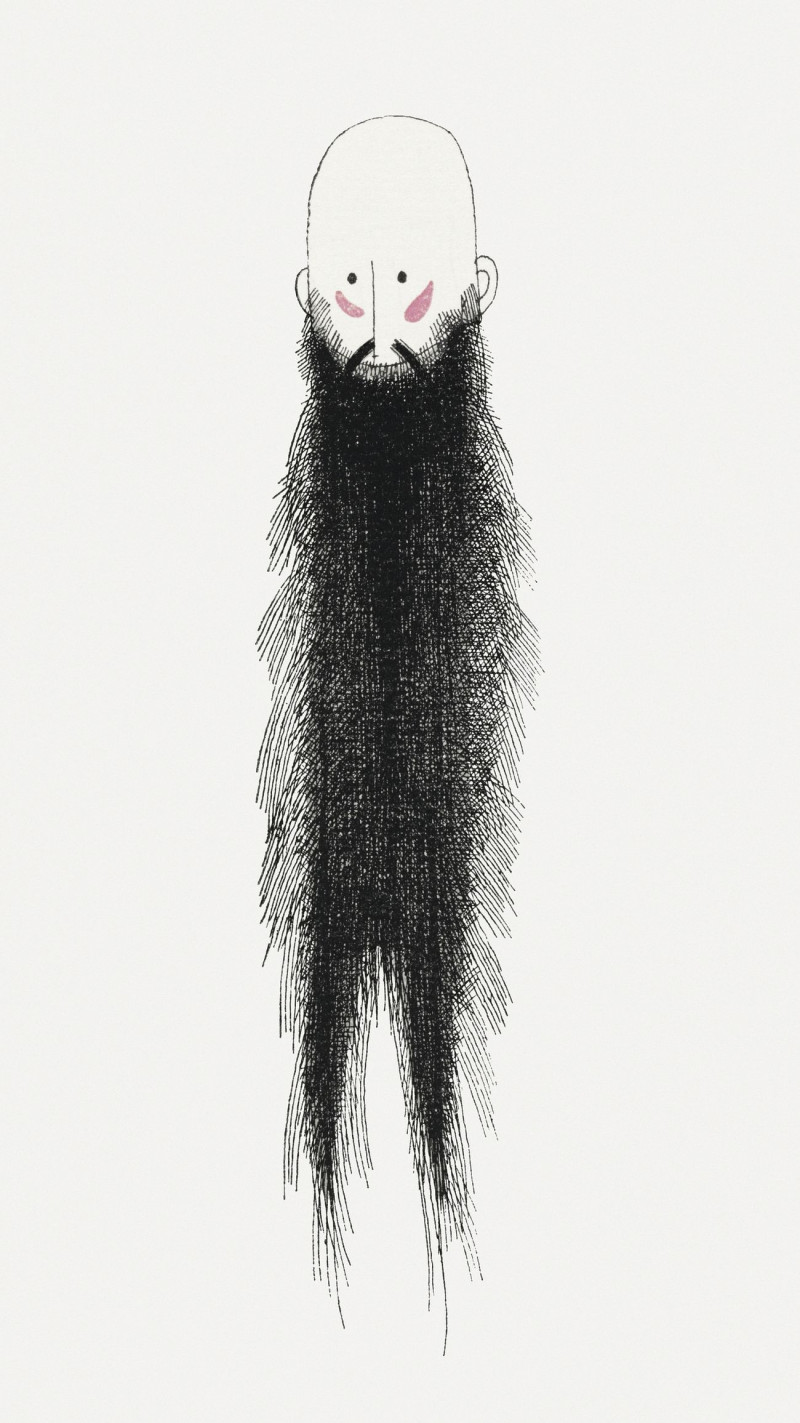Self-Portrait With Physalis (1912)
Technique: Giclée quality print
Recommended by our customers
More about this artwork
Egon Schiele's "Self-Portrait with Physalis," painted in 1912, is a compelling example of the artist's expressive style and his deep exploration of self-identity. The painting features Schiele himself as the primary subject, captured with a stark intensity that is characteristic of his work.In this self-portrait, Schiele’s angular, emaciated face takes center stage. His eyes are wide and staring, conveying a powerful sense of emotion and introspection. The artist's use of bold, dark outlines around his features and the textured strokes of muted colors across his face add a layer of depth and complexity, making the viewer feel the turmoil and intensity of his gaze.To the left of the portrait, an almost ethereal depiction of a Physalis plant (commonly known as Chinese lantern) adds a delicate contrast to the harsh lines of Schiele’s visage. The plant is rendered with a lighter touch, its pale, paper-thin husk and vividly red fruit providing a splash of color and a symbol of fragility and transience. This juxtaposition might suggest the vulnerability underlying Schiele’s outward appearance of severity.This painting is not just a self-exploration but also a striking composition of emotional and visual contrasts: the enduring human spirit represented by the artist himself alongside the transient and delicate nature of life symbolized by the physalis.
Delivery
Returns
Egon Schiele was an Austrian painter. A protégé of Gustav Klimt, Schiele was a major figurative painter of the early 20th century. His work is noted for its intensity and its raw sexuality, and the many self-portraits the artist produced, including nude self-portraits. The twisted body shapes and the expressive line that characterize Schiele's paintings and drawings mark the artist as an early exponent of Expressionism.

